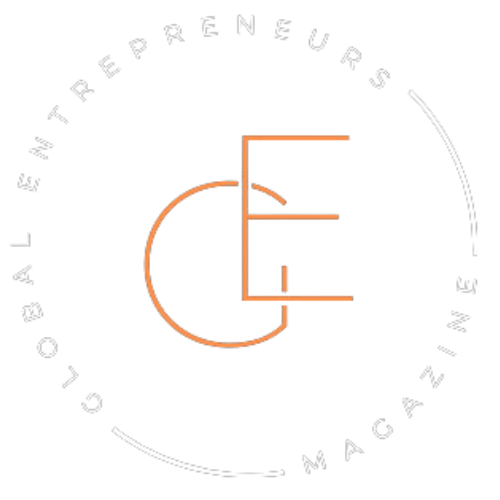It’s late. The office is quiet, hours past the time most people would’ve called it a day. One desk lamp still glows in the corner. At that desk sits someone who isn’t thinking about the next funding round or their follower count. They’re sketching ideas that might not pay off for a decade—or ever. But they keep going anyway.
Not because they want to be remembered. Because they have something worth remembering.
Some entrepreneurs build businesses. Others build legacies.
The difference isn’t found in the size of the company or the press it gets. It’s in the way they think. Legacy-driven founders aren’t chasing applause. They’re solving problems no one asked them to. They’re making decisions that don’t always look smart on a spreadsheet. They care deeply—sometimes irrationally—about doing things the right way, even if it’s slower, even if no one notices.
This is about them. The ones who don’t just aim to win in their lifetime—but to plant something that keeps growing long after they’re gone.
The early signs of a legacy-driven mindset
You can spot them early if you know what to look for. While others chase speed and scale, they ask different questions—questions about meaning, about longevity, about the kind of world their work might help shape.
They don’t get distracted by trends. They’re rarely the loudest voice in the room. But when they speak, people listen—because what they’re building has roots.
It starts small. A founder refuses a tempting shortcut because it doesn’t sit right with their values. Someone turns down an acquisition, not because the offer wasn’t generous, but because the mission still had unfinished business. These moments often look like stubbornness from the outside. Inside? It’s clarity.
Legacy thinkers move with intention. They aren’t in love with hustle culture. They’re in love with building something that actually matters. And even in the early days, there’s a quiet confidence in their decisions—like they’re building for someone they’ll never meet.
Building with intention, not hype
They don’t chase headlines. They chase structure.
Every choice—what to build, who to hire, how fast to grow—is measured against something deeper than market trends. These entrepreneurs aren’t impressed by overnight success stories. They know that what grows fast can break faster.
One founder launched her product during a recession. Investors called it reckless. But she’d spent years preparing—hiring slowly, listening closely, building systems that could hold under pressure. When the storm hit, her company didn’t crumble. It adapted.
That’s the pattern. Legacy builders play a long game most people don’t have the patience for. They make the unsexy decisions. They skip shortcuts. They’d rather grow slowly and stay true to their core than balloon quickly and lose it all.
No flashy launch. No viral stunt. Just steady work, day after day, brick by brick.
People over profit
Ask their former employees what they remember. It won’t be the product roadmap or the quarterly targets. It’ll be the time the founder showed up at their parent’s funeral. The way they listened without checking their phone. The quiet generosity that never made it to a LinkedIn post.
These entrepreneurs don’t treat people like tools. They treat them like legacy.
They build cultures where loyalty isn’t bought—it’s earned. Teams stay not because they’re locked in, but because they believe in something together. Promotions don’t just reward output; they reward care.
One founder set aside shares of his company for longtime staff, even the janitor who’d worked there since day one. “If I win,” he said, “we all win.” Years later, when the company got acquired, those shares paid for weddings, homes, college tuitions.
Legacy doesn’t always look like a statue or a bestselling memoir. Sometimes it looks like a life changed quietly behind the scenes.
Teaching, not just building

They don’t hoard knowledge. They pass it on.
Not because they’re trying to be the face of a movement, but because they’ve seen what happens when wisdom dies with its keeper. These founders write the manual even if no one asks for it. They mentor without posting about it. They speak at small local events long before someone invites them to the big stage.
There’s a kind of quiet power in that.
One founder used to hold monthly lunches with young entrepreneurs in her city. No cameras. No PR. Just real talk over soup and coffee. Years later, some of those attendees run companies of their own—and they still cite those lunches as a turning point.
The legacy isn’t just in what they’ve built. It’s in the minds they’ve shaped, the questions they’ve helped others ask, the permission they’ve given people to do things differently.
You don’t need a platform to pass something down. You just need to care.
Staying small, thinking big
They’re not always household names. Some of them run businesses you’ve never heard of—quietly changing lives in corners of the world that don’t show up in pitch decks or headlines.
They might own a family bakery that hires local teens and teaches them more about work ethic than any classroom ever could. Or they run a tech company with no interest in going public, but every interest in paying people fairly and treating clients like human beings.
Their scale doesn’t define their impact. Their values do.
One founder turned down expansion into a new market because it would’ve stretched his team too thin. “We’re not trying to be everywhere,” he said. “We’re trying to be good here.” Years later, that same small team still works together—still doing work that matters, still walking the founder’s original line.
These are the builders who prove that legacy doesn’t need a spotlight. It just needs a clear heart and a steady hand.
The legacy test: what would survive without you?
Eventually, every founder steps away—some by choice, some by force. That’s when the truth surfaces.
What remains when they’re not in the room anymore?
Legacy isn’t in the brand guidelines or the mission statement painted on the wall. It’s in the way people act when no one’s watching. The decisions they make under pressure. The stories they tell new hires about how things used to be—and why that still matters.
One founder quietly transitioned out of their company after a health scare. No grand announcement, no drama. But months later, clients were still treated the same, staff still showed up with the same fire, and meetings still opened with the same guiding question he used to ask: “What’s the right thing to do, even if it’s hard?”
That’s the test. Strip away the personality, the presence, the title—and see what’s left standing. If the roots are deep enough, the tree keeps growing.
Building a life’s work
Legacy isn’t carved in stone. It’s built in the in-between moments. The decisions that don’t get applause. The days that feel ordinary but stack up into something extraordinary.
The founder from the beginning—the one burning the midnight oil, sketching ideas without a guaranteed payoff—they weren’t building a company that night. They were shaping a belief. A way of working. A kind of truth that others could carry long after they’re gone.
That’s what lasts. Not the logo. Not the revenue milestones. But the values that outlive the original voice.
Some people chase success. Others build something that keeps whispering their name even when they’re no longer around to say it.
That’s legacy. Not what you leave behind—but what you set in motion.




